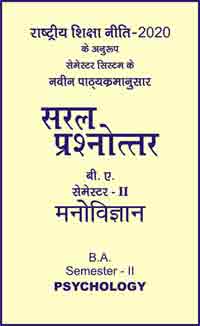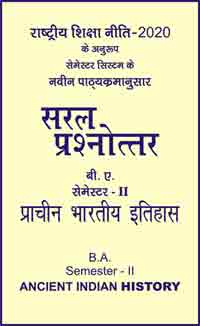|
बी एड - एम एड >> बी.एड. सेमेस्टर-1 प्रश्नपत्र-IV-B - वैल्यू एण्ड पीस एजुकेशन बी.एड. सेमेस्टर-1 प्रश्नपत्र-IV-B - वैल्यू एण्ड पीस एजुकेशनसरल प्रश्नोत्तर समूह
|
5 पाठक हैं |
||||||
बी.एड. सेमेस्टर-1 प्रश्नपत्र-IV-B - वैल्यू एण्ड पीस एजुकेशन (अंग्रेजी भाषा में)
Chapter 2 - Sources of Values, Determinants of Values
Question- Explain the various Sources of Value.
Answer -
Sources of Value
There are many sources of values. Important ones are discussed as follows:
-
Sociological source of value: There are various types of values related to different aspects of social life activities. Some values are related to parents and some values are related to the national system. The social life values are related to religious conduct, political conduct, economic conduct, psychological conduct, etc. These types of values are individualistic. Similarly, the social values have one cognitive element. The aspect of value operates in thinking process ‘what is right or wrong?’ This type of value is very close to social norms. It is difficult to distinguish between the two. According to Johnson, ‘values are the ideal rules of a society. A social value integrates the three aspects: emotions, activities and cognitive elements, which operate simultaneously. The difference of these aspects vanishes automatically in social values.
-
Religious and spiritual source of value: Religion etymologically refers to a state of unification between two aspects which cannot be separated for whatever reason, but has the capability of becoming one again. Religion, therefore, believes in the unity of man and God. Man is essentially God, and because it is so, He has the capability to achieve finite through the infinite; there is unity in diversity because both are essentially one. Religion should therefore help to bridge the gap between man and God by playing on the divine nature of both. Divinity is the essence of religion.
- Psychological source of value : The culture of a person may be roughly described as the expression of a ‘consciousness of life’ which formulates itself in three aspects.
‘There is a side of thought, of idea, of upward will and the soul’s aspiration; there is a side of creative self-expression, appreciative aesthetic, intelligence and imagination; and there is a higher thinker which view our mind’s purest, largest and most general formulation of its consciousness of life and its dynamic view of existence’. —Sri Aurobindo
It is an ultimate expression of thought, will and action. ‘Values are not taught but are to be caught’. It is a very old saying. It was perhaps true in days gone by when parents at home and leaders in the community in the various walks of life were all value-based people. Then, younger children and growing adolescents could catch values of the elderly people and either by imitation or by special efforts to develop appropriate values accepted and respected in society. Much water has flowed under the bridge since then and there is a grave deterioration both among parents and community leaders in terms of their being value models for the younger generation. We cannot therefore expect values to be caught from undesirable situations and persons in society in today’s world. Therefore, values have got to be taught in addition to being caught from selected situations and personalities.
Biological source of value : We argue that in mammals, at least, a lot of the behaviour is caused by mental structures intermediate between stimulus and response. These structures are feelings or motivations. They cause behaviour by providing general goals, but without specifying particular actions. The feelings are many, distinct and situation-specific; the complete repertoire of feelings that members of a species normally experience, each weighted according to its situation-specific intensity, is the species feeling profile. Mammals use their perceptual apparatus and intelligence to interpret the world and to anticipate future events. These interpretations and anticipations in turn evoke feelings, which motivate behaviour. In any given situation - real or imagined - a number of feelings may be evoked, orienting the animal to a number of different purposes at once. The ensuing struggle among feelings for supremacy is the essence of decision making, and behaviour (including verbal behaviour in humans) is the result of the triumph of one feeling, or coalition of feelings, over all others.
|
|||||













